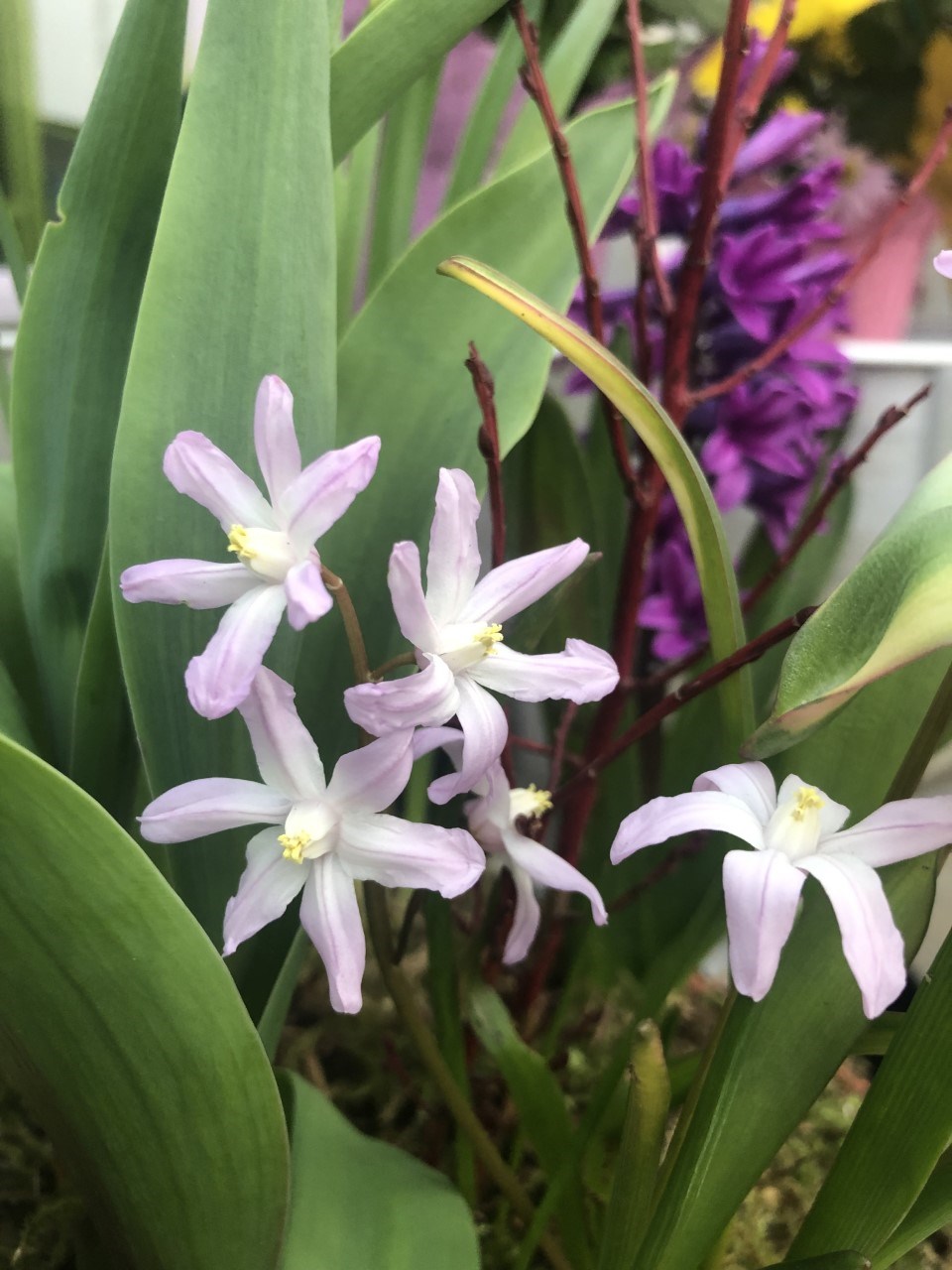The following column was submitted to the Tri-City News from Brian Minter — master gardener, best-selling author, Order of Canada recipient and co-owner of Minter Country Garden Store.
The giants of spring bulb colour are giving way to their smaller cousins that repeat and actually increase their performance year after year and leave a very soft footprint of dying and unsightly foliage.
Yes, the big tulips, narcissus and hyacinths provide a great splash of colour and are important in the right locations, but minor bulbs offer a subtle accompaniment to so many other spring plants and can make our gardens truly spectacular.
Snowdrops and crocuses are old-fashioned favourites that perennialize readily almost anywhere in the garden to create an ever-expanding display each year.
The tiny, yellow, buttercup-like winter aconite (Eranthis cilicica) is one bulb that sneaks ahead to bloom even before snowdrops. Its touch of yellow is a true delight during the cold gray months of January and February. It multiplies nicely among ground covers but looks particularly pretty together with dark ajugas, like ‘Black Scallop’, dark foliaged thymes and compact, almost black heucheras.
In recent years, more varieties of grape hyacinths (muscari) have been reintroduced into the marketplace than perhaps any other bulb. Blue is a refreshing contrast colour for so many other plants and bulbs, especially those with golden or red foliage. I think some recent innovations are truly spectacular.
Muscari ‘Mt. Hood’ has clear blue flowers capped with snowy white tops. Planted in clusters, they look sensational, as does M. neglectum with its dark blue flowers rimmed in white.
If you love a little perfume, the first yellow variety, M. ‘Golden Fragrance’, is quite an attention-getter. These are all long-blooming, mid-season varieties. There are also some quite pleasing later varieties.
Muscari ‘Plumosum’ is a large, unique blue flowered variety, and M. comosum is a lavender coloured, wispy variety that is so late it blooms with the alliums. Muscari ‘Valerie Finnis’ is a lovely soft blue that lifts any combination. All muscari need to be planted in groupings for the best effect, and they look great underplanted around dwarf forsythia and corylopsis (well-known as buttercup winter hazel).
We love scillas in our gardens simply because they bloom in May when most other bulbs are finished. The blues are nice, but I must admit that the white and pink Scilla campanulatas are fabulous. The pink, in particular, adds a new and important colour to our gardens. They multiply well, and yes, they even have a perfume.
Many folks, who ask for old-fashioned English bluebells, are not quite sure what to request in terms of getting the right bulb. Well, Scilla nutans are the true English bluebells that thrive best in light shade and bloom over a long period of time.
One personal favourite is the little bulb puschkinia.
These tiny, pure white bulbs produce pin-striped, blue flowers and are incredibly bright and cheery in March landscapes. They look great with miniature yellow daffodils or dwarf red tulips, and they are long blooming. From a distance, they look like soft blue clumps that add charm to any border or rockery.
Alliums are such a treat in June and July gardens, adding another fresh look as summer annuals get settled in. There are so many varieties, but the yellow Allium moly luteum, the fragrant, bell-like, pink A. bulgarium and the purple, egg-shaped flowerheads of A.
‘Drumstick’ (A. sphaerocephalum) are my favourite tiny flowered varieties. Allium schubertii and A. christophii are sheer wonders for their intricately woven flower heads that last for weeks. A little showing off is okay, and no June garden should be without a few of the big guys, like A. giganteum and the even larger A. ‘Globemaster’. They look magnificent blooming among variegated grasses like Miscanthus ‘Variegatus’ and Phalaris ‘Fersey’s Form’. They will also draw the most admiring comments about your garden.
I’m very fond of the mini daffodil ‘Golden Bells.' With a bulb size similar to a crocus, it produces three to four flowers per bulb. It’s a ‘must have.'
Treat these bulbs as perennials and coordinate them well for a display next spring that will only get better year after year.





